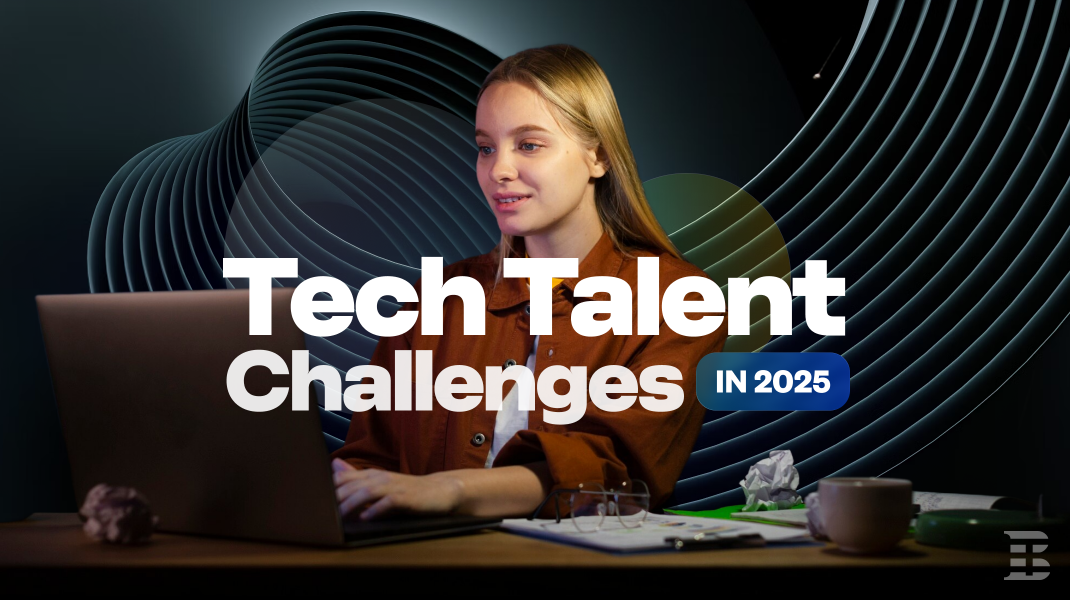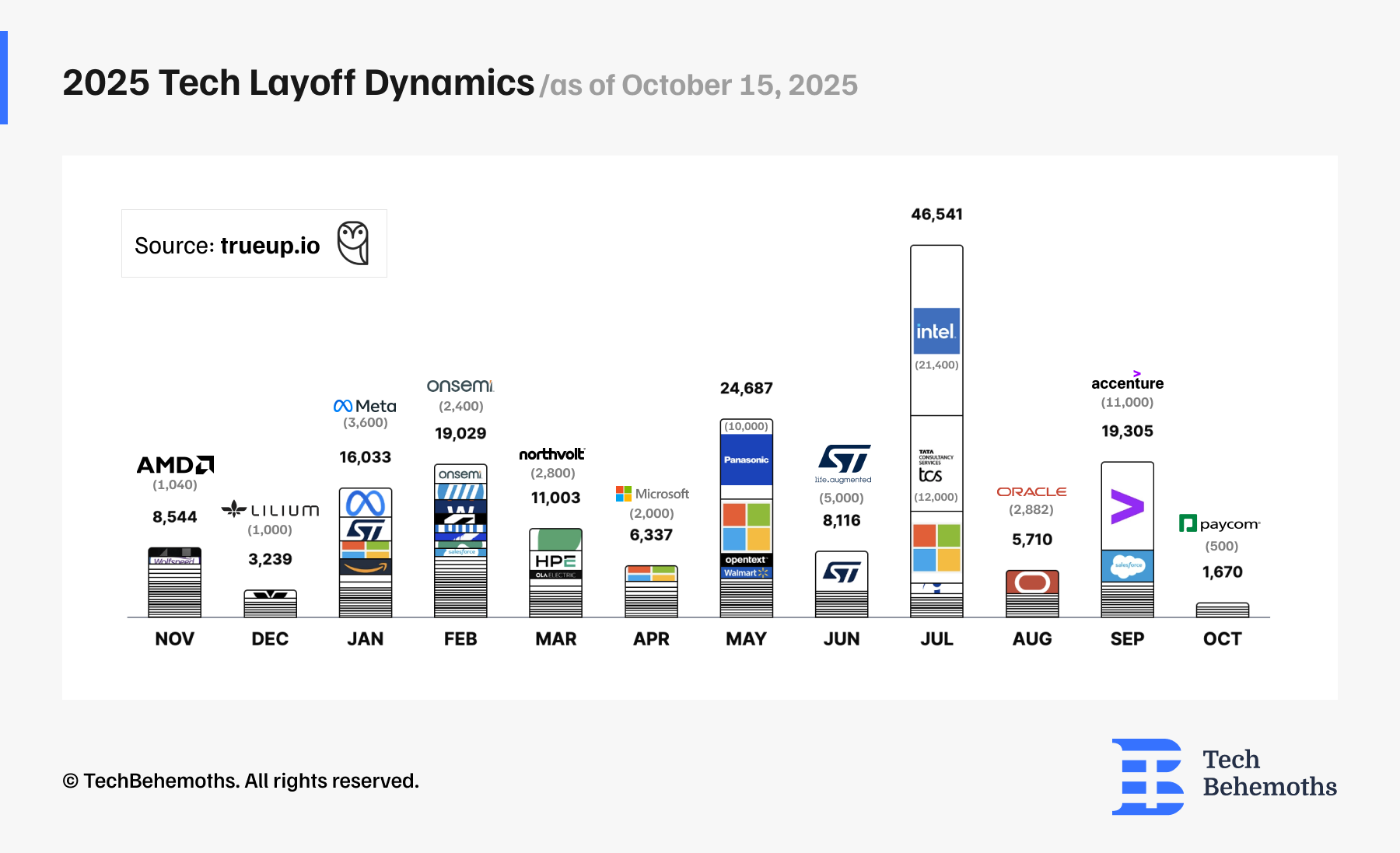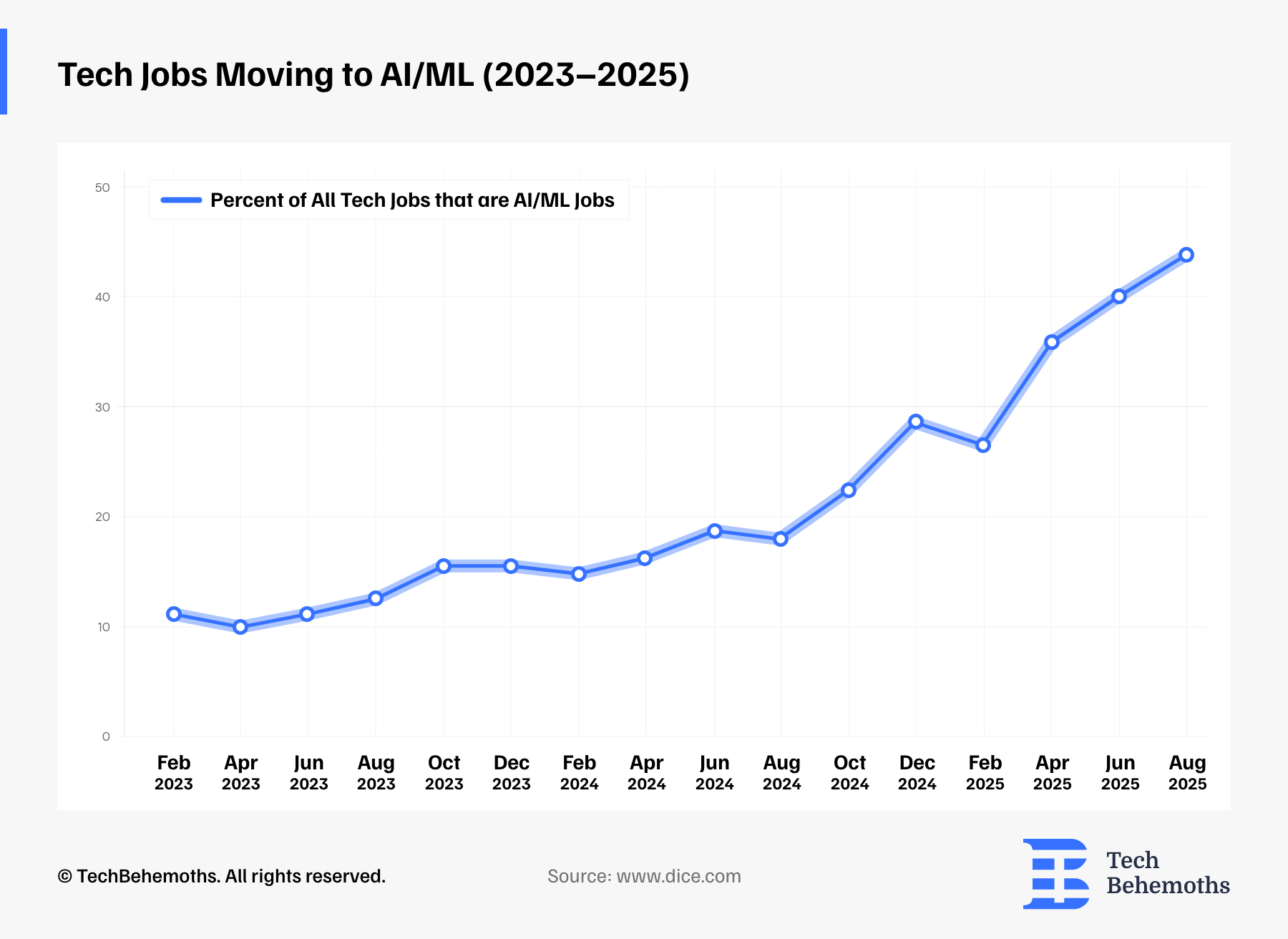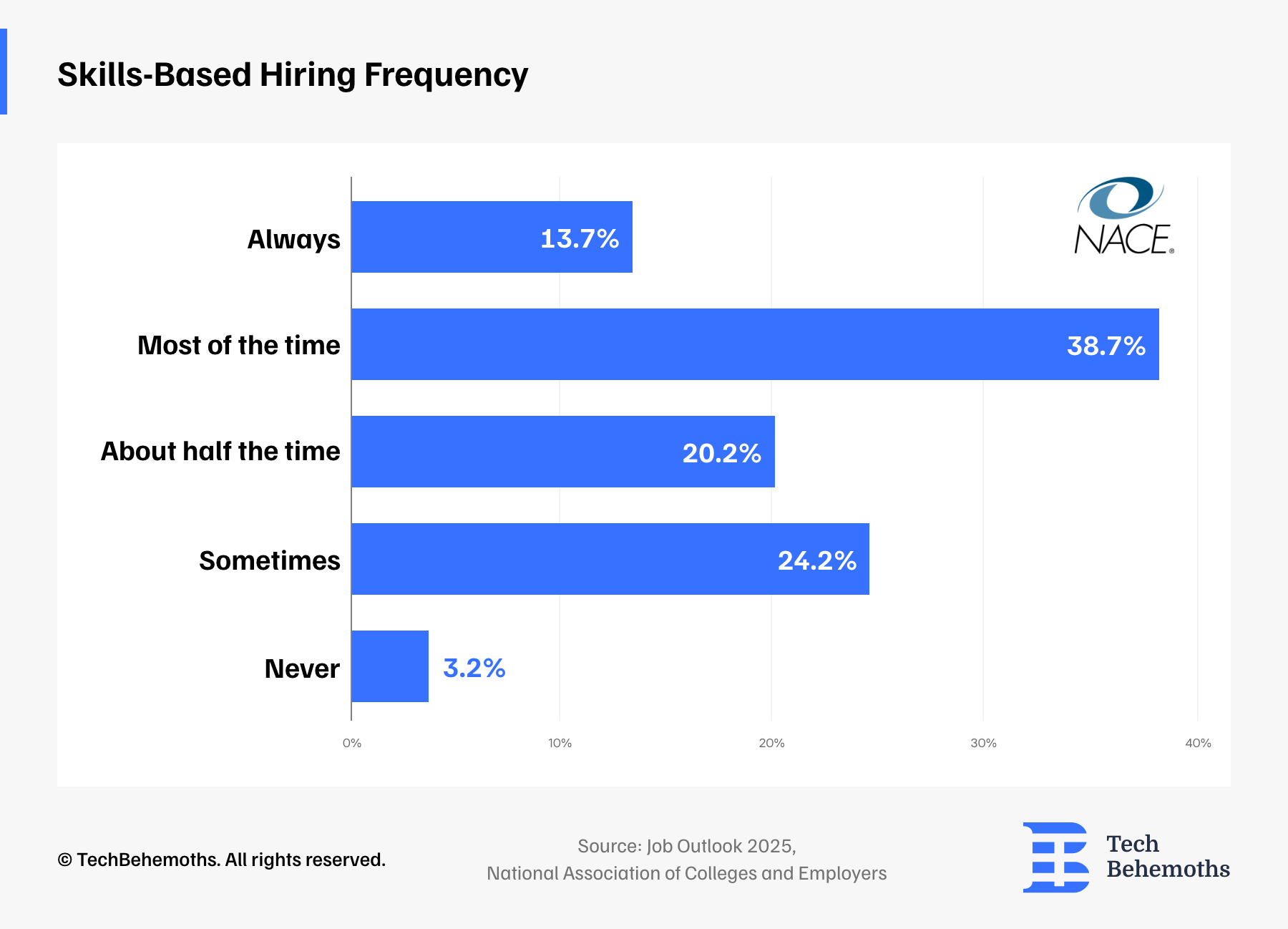Tech Talent Challenges in 2025: How Businesses Should Adapt

Summary
- Companies are facing a growing demand for skills in artificial intelligence (AI), machine learning (ML) and data science, making the recruitment process even more complex and challenging.
- Learn what the key strategies are for businesses to remain competitive, and see why companies that embrace flexibility, invest in employee development, and align talent acquisition with evolving technological requirements will secure a market advantage in 2025 and beyond.
In recent years, both people in the workforce (employees) and businesses (employers) have been facing a series of changes driven by the constant and progressive digitalization that has engulfed the employment sector.
To remain competitive, companies must adapt to the new reality and pursue different recruitment strategies than those they have been using so far. The article begins by analyzing the technology job market trends in 2025 and continues with the main points that need to be implemented to ensure that your business thrives in such new employment conditions.
State of the Tech Talent Market in 2025
The technology job market in 2025 is undergoing a rapid and noticeable transformation, where both its structure and requirements have managed to change dramatically. One of McKinsey's research from this year says:
“In a tech-powered future, people management will be much more proactive, data-driven, and fluid. Organizations will have the fact base they need to launch interventions such as hiring, insourcing, outsourcing, upskilling, or reskilling. And these interventions themselves will not be one-off activities—rather, the practice of adapting, reallocating, adjusting, and improving will become the norm.”
- McKinsey & Company, February 2025
Forbes outlines that over 26,000 layoffs occurred in the first half of 2025 in the IT sector, but it is worth mentioning that this is not a reason to panic and that these layoffs do not necessarily indicate an economic crisis, but rather a reorganization and realignment of companies.
Speaking of trends, also at the beginning of 2025, there is an increase in demand for specialized roles in Artificial Intelligence (AI), Machine Learning (ML), and Data Science. Along with the increasingly acute need for specialists in these fields, companies are still facing a talent shortage, which makes employee recruitment and development much more strategic.
By 2030, as the World Economic Forum reports, it is estimated that 170 million jobs will be created globally due to structural transformations of the labor market.
To be clear, this represents approximately 14% of all existing jobs, and the main factors determining this change are:
-
Digitalization
-
Automation
-
Green transition
Let's see how these have influenced the Tech Talent Market sector and how they have led to such a considerable consequence as large-scale tech layoffs.
The 2025 Layoff Wave: What It Reveals
So far in October 2025, thousands of tech players have watched a drastic, explainable - but difficult to accept - phenomenon in which a wave of layoffs has occurred, with approximately 157,000 employees laid off from over 544 companies in the technology sector, thus recording an average of 574 people laid off per day.
Therefore, the trend of layoffs in the technology sector has influenced even large and prosperous organizations such as Google, which resorted to reducing over 100 positions in its design and user experience teams, as part of a strategy of streamlining and focusing on artificial intelligence.
In the same vein, Salesforce eliminated 4,000 positions in its customer support departments, replacing a significant part of them with AI agents. Microsoft announced the layoff of 9,000 employees in July 2025, following a major restructuring.
Commonwealth Bank of Australia has laid off 283 employees across its technology and retail sectors as it expands its India office, sparking controversy over outsourcing.

It is also noticeable in the graph that in July 2025, there was a considerable assault of 46,506 layoffs among employees in the technology sector, more precisely from large companies such as Microsoft, Intel, and Scale AI Fast Company.
As one of the main reasons why the technology sector would have registered such a high number in July, compared to other months, we can consider the seasonal factor, because many companies finalize their semi-annual financial assessments in June, which can lead to decisions to reduce staff to improve operational efficiency. Another factor that is worth considering is the current trend in implementing AI and automating processes that more and more companies are resorting to, following another valid reason - strategic reorganization, as implemented, for example, by Sutro Biopharma, which categorized the layoffs as part of a strategy to preserve financial resources, after their market value decreased significantly.
How Businesses Should Adapt in 2025 - 6 Key Strategies
1. Prioritize AI and Specialized Tech Roles
Currently, the demand for AI and machine learning skills reached record highs. The 2025 report “ICT in Motion: The Next Wave of AI Integration” by the AI Workforce Consortium — led by Cisco and including Accenture, Google, IBM, Intel, Microsoft, SAP and others — shows that AI roles now dominate tech job growth across G7 countries (Canada, France, Germany, Italy, Japan, UK, US).
Key insights:
-
78% of tech roles require AI skills, reflecting a major shift in job requirements.
-
7 of the 10 fastest-growing ICT roles are AI-related, such as AI/ML Engineer, AI Risk & Governance Specialist, and NLP Engineer.
-
Demand for AI governance (+150%) and AI ethics (+125%) skills accentuets the importance of combining technology expertise with law and ethical knowledge.
-
Specialized AI skills are surging: AI security (+298%), foundation model adaptation (+267%), responsible AI (+256%), multi-agent systems (+245%).
-
Top tech hubs leading AI job growth: Silicon Valley (+156%), London and Toronto, with emerging hubs like Manchester, Lyon, and Vancouver seeing +70% growth.
“As AI reshapes our world and work, people remain at the center. Technical expertise combined with human strengths like collaboration and leadership will shape a brighter future.”
- said Francine Katsoudas, Cisco Chief People, Policy & Purpose Officer
Also, according to a report by Ravio, companies have begun to prioritize strategic and AI-focused roles over administrative and support ones. The study also shows that 85% of available AI positions are for professionals with mid- to advanced experience.
2. Implement AI-Driven Hiring and HR Tech
Walmart exemplifies how companies combine AI adoption with talent growth. Doug McMillon, Walmart CEO, said, “AI is going to change literally every job.” While some roles will be automated, new positions are emerging - for example, the retailer recently created an “agent developer” role to deploy AI agents that automate complex workflows.
Sravana Karnati, EVP of Global Technology Platforms at Walmart, adds: “We continue to adjust our workforce given the new realities, but we’re still working very hard to find the right talent in the market. Good engineers are always needed.”
Companies that will implement the strategy of using artificial intelligence to automate technical and/or administrative tasks will significantly improve their productivity, as well as collaboration between employee teams. Also, in the recruitment process itself, this approach will replace the work of an HR manager, providing a faster and more accurate assessment of candidates, reducing recruitment time and associated costs.
3. Adopt Skills-Based Hiring Over Traditional Credentials
As tech roles accelerate, skills-based hiring becomes a key strategy. In the US, 43% of tech jobs already require AI skills, and the demand is growing steadily.
The trend is confirmed by companies’ shift to assessing skills, not degrees:
-
81% of companies will adopt skills-based hiring in 2024, up from 57% in 2022.
-
76% of employers say skills-based hiring delivers better results than education-based hiring.
-
92% see higher-quality talent, and 89% confirm a better fit for the role when candidates are assessed through skills assessments.
In tech, practical assessments and skills tests are increasingly replacing the classic resume:
-
The use of skills assessments has increased by 50% in AI & ML, by 55% in cloud, and by 30% in product management.
- 72% of HR professionals use technical tests or simulations to validate candidates.

This shift is not only strategic, but also operational. Skills-based recruiting leads to processes with up to 90% lower costs and 91% faster time to hire. Also, LinkedIn reports that companies that do away with degrees expand their talent base by almost 10 times.
NACE reseach has documented that skill-based hiring practices appear to be relatively ubiquitous, with over half of employers using these practices always (13.7%) or most of the time (38.7%) in their hiring process.

As AI, cloud, and automation redefine tech roles, companies that hire “by skills, not by pedigree” will have faster access to the talent they need.
4. Foster a Culture of Adaptability and Continuous Learning
As AI and tech-powered future rewrites job descriptions, technical skills become obsolete within 12 to 18 months. At this rate, the competitive advantage is no longer just the technology adopted - it’s the speed at which a team can learn and adapt.
|
Tech Workforce Challenge |
Relevant Data |
Strategic Implication |
|---|---|---|
|
Accelerating Digital Skill Gaps |
87% of executives report existing or imminent digital skill shortages (McKinsey) |
Companies must develop talent internally, reduce focus on external sources |
|
Technology Evolves Faster Than Traditional Training |
Fastest-growing skills for 2025: AI, big data, cybersecurity, cloud (World Economic Forum) |
Ongoing upskilling in AI and automation becomes critical infrastructure |
|
Top Talent Chooses Growth-Driven Companies |
94% of employees would stay longer at a company that invests in their development |
A Learning Culture is not a perk - it’s a retention strategy |
It is also worth mentioning that Gallup concluded that companies with engaged employees (through active development programs) register +21% profitability.
What a Learning Culture Adapted for Technical Teams Looks Like:
-
AI-Driven Learning Paths (Platforms like Degreed / Coursera for Business / Pluralsight with personalized recommendations for roles like DevOps, Data Engineers, etc.)
-
"Micro-Upskilling" integrated into workflow, not just quarterly trainings
-
Internal Tech Talks & Hackathons for real know-how transfer, not just theory
-
Engineer-to-engineer mentorship loops (e.g., senior AI engineer -> junior developer transitioning to ML)
-
Time allowance for learning (Google's 20% rule, Atlassian's ShipIt days)
As artificial intelligence rewrites the entire job and recruitment industry, companies can no longer afford static teams. The organization that will survive will be the one that is most adaptable - possible not through restructuring, but implicitly through continuous learning - at all levels, from operational employees to management.
5. Adopt Remote & Hybrid Work
According to a 2024 Zoom survey, 84% of employees expressed a preference for a hybrid or fully remote work model, also mentioning that they feel much more productive in these work settings. Synthesizing the studies, it appears that companies that offer these options have a higher employee retention rate than those that do not implement hybrid or remote work options.
Recent research by Stanford economist Nicholas Bloom, published in Nature, confirms the same trend: in an experiment with more than 1,600 employees in fields such as software engineering, accounting, and marketing, those who worked from home two days a week had the same level of productivity and promotion chances as those who were present in the office full-time. What’s more, the resignation rate dropped by 33% among employees who switched to a hybrid model — saving the company millions of dollars in turnover costs.
Bloom concludes clearly: “Hybrid work is a win-win-win for productivity, performance, and retention.” Not coincidentally, 80% of US companies already offer some form of remote or hybrid work, and the other 20% "pay a price" by losing talent to more flexible employers.
6. Capitalize on Data-Driven Decision Making
Data-Driven Decision Making (DDDM) allows companies to replace intuition with concrete information from user feedback, financial data, market predictions, or behavioral analytics. In a world where humanity generates over 400 million terabytes of data every day, organizations that know how to collect and interpret this data gain a major competitive advantage.
Impact |
Industry Example |
|---|---|
Reducing churn |
Streaming platforms (e.g., Netflix) use behavior-based recommendation algorithms to keep users engaged. |
Real-time risk detection |
Banks and fintechs apply machine learning to identify suspicious transactions and prevent fraud. |
Operations optimization |
Global retailers automatically adjust inventory based on consumption patterns and weather forecasts. |
Personalized customer experiences |
Online stores use data for dynamic pricing and real-time personalized offers. |
According to IBM studies, companies that widely implement DDDM achieve an average 19% increase in profitability and a 16% reduction in operational costs.
What Tech Leaders Should Do Next
-
Replace opinions with dashboards - strategic decisions should be based on metrics, not gut feelings.
-
Build cross-functional data teams - a combination of engineers, analysts and data translators.
-
Automate forecasting & reporting with AI - for quick reactions, not post-factum analysis.
Final Thoughts
The tech talent market has already changed; we are watching and feeling the consequences firsthand. However, it is still going to surprise market players; both employees and employers must be prepared in all aspects.
In the next five years, it is expected that 39% of current skills will become obsolete, which emphasizes the urgent need for adaptability to new technological job market requirements, we can also call them the standards of the last decades, where the importance of learning, continuous self-improvement acquires a special value.
For companies, this transformation represents both a challenge and an opportunity. Accordingly, they need to:
-
Adapt their recruitment strategies
-
Invest in continuous employee development
-
Focus on roles that drive innovation
Businesses that will be flexible, embrace these changes, and proactively review their strategies to adapt appropriately to the 2025 TECH TALENT Market - will gain a competitive advantage now and in the years to come, as well, if they maintain the same visionary organizational culture.
Related Questions & Answers
How big is the demand for AI skills in 2025 talent acquisition?
How tough is it for companies to hire the tech talent they need?
Which regions are considered technology leaders?
What are the most effective recruitment strategies for businesses to stay competitive in 2025?